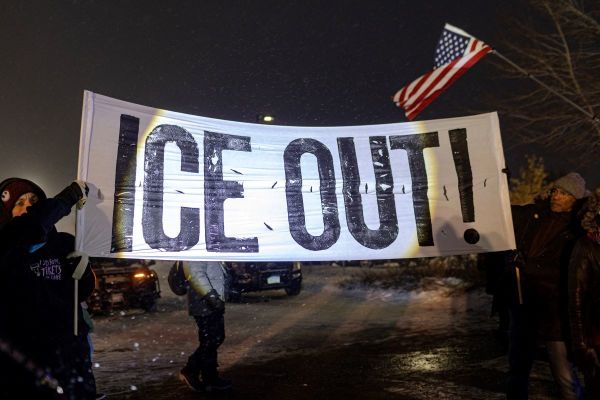'Cultural erasure': Azerbaijan destroys Armenian churches, heritage sites after Nagorno-Karabakh war

Azerbaijan is guilty of “cultural genocide” for destroying Christian sites in the Nagorno-Karabakh region and falsely claiming that Armenian religious presence there never existed, according to a report by a legal advocacy group.
The European Centre for Law & Justice (ECLJ)’s report lists the eradication of “churches, monasteries, khachkars [cross-stones] and other cultural artifacts that tell of the faith and culture of the Armenian people.”
Azerbaijan gained control of the majority of Nagorno after the Second Karabakh War — September 2020 to November 2020. Dozens of Armenian Christian heritage sites in Nagorno-Karabakh were destroyed, damaged or closed to the public during that period, according to the June report, “The Systematic Erasure of Armenian Christian Heritage in Nagorno-Karabakh.”
There are now 500 sites under Azerbaijan’s control, with 6,000 Armenian monuments, the report states. Foreign observers are banned from the sites, but satellite surveillance has revealed the destruction.
Churches damaged or destroyed, as listed in the report, include Meghretsots Holy Mother of God Church, the seventh-century Vankasar Church in Tigranakert, St. John’s Cathedral of the Mother of God in Stepanaker, and Ghazanchetsots Cathedral in Shushi, defaced with “multiple religious symbols … removed from the church, including the unique angels on the building’s gate, the domes of the church, and the cathedral’s cross.”
Under the pretense of renovation, the Azerbaijani government vandalized the Surb Sargis Church, built in 1279 in Tsar village of Karvachar, according to the report.
“Azerbaijani efforts to restore this church have taken the form of destroying religious symbols and enclosing the area from view via a large iron fence,” the report states.
Two historic polished stone slabs at the same church site, decorated with Christian artwork and Armenian language inscriptions, were smashed.
“Thus, this destruction has not only deprived Armenia of a unique piece of its heritage, but it has removed undeniable evidence of the Armenian origins of the church,” the report states.
Other incidents include the razing of an 18th-century church building, St. Sargis of Hadrut in Mokhrenes, in March 2022, and the Azerbaijanis “completely cleared the land and have begun building a new structure atop the grounds of the church.”
St. John the Baptist Church in Shushi revealed signs of Azerbaijani bomb damage in 2020, as shown in satellite imagery earlier this year (April 4), and the building was destroyed, according to the report.
Satellite imagery on the same day also showed the desecration of Ghazanchetsots Cemetery in Shushi, with the Azerbaijani government from October 2023 “systematically [destroying] the tombstones, which dated back to the 18th and 19th centuries.”
“This cemetery is merely one of many, including the Mets Taher, Sghnakh, Sui Northern, and Yerevan Gates cemeteries, that have been destroyed,” according to the report.
Other cemeteries and sacred sites either destroyed or damaged include Ghuze T’agh Cemetery near Aknaghbyur, the Koha Sacred place, the cemetery near Vazgenashen, Ghazanchetsots Cemetery and Yerevan Gate cemeteries in Shushi.
The ECLJ suspects that the St. Ascension (St. Hambardzum) Church in Berdzor, demolished and removed from the grounds, may become a mosque after Azerbaijan's Public Organization for the Protection of Monuments put forward a redevelopment proposal.
Stones from ruined medieval Armenian church buildings and cemeteries were used to build the Zar and Chirag schools in the 1950s, the report states. These included Khachkar ornamental relief relics and inscribed stones that survived destruction by the former Azerbaijan Soviet Socialist Republic.
“The schools were looted and abandoned in the 1990s, but their structures remained intact, serving as a reminder of the enduring heritage of the Armenian Christians in Nagorno-Karabakh,” noted the report. “Between Oct. 5, 2023, and June 2, 2024, however, Azerbaijan razed both schools to the ground.”
Another act of destruction saw the removal of the Cross Memorial located on a hill near the city of Stepanakert. As a memorial to Armenian soldiers “and a symbol of the nation’s Christian heritage,” the 50-meter high cross had been the second tallest in Europe. Azerbaijani forces took down the cross last September.
At the same time, to achieve “complete cultural erasure,” the report states, “Azerbaijan has gone beyond merely destroying Armenian heritage. Azerbaijan is also denying it ever existed.”
The Azerbaijani government has falsely claimed the Armenian Christian sites are of Caucasian Albanian origin and the Armenians were never native to Nagorno-Karabakh, according to the report.
“Instead, Azerbaijan claims that when Russia gained control of the region in the 19th century, the great northern power facilitated a large- scale Armenian migration into the South Caucasus,” the report states. “Upon arriving in the region, Armenian clergy began to co-opt the ancient Caucasian Albanian churches by adding fraudulent Armenian inscriptions and modifying the architecture to appear Armenian.”
These claims are “blatantly false, but they are also malicious,” the ECLJ states, accusing the country of a revisionist history that attempts to strip ethnic Armenians, including the natives of Nagorno-Karabakh, of their heritage.
“It paints the Armenians as nothing more than intruders and pawns in Russia’s efforts to ‘Christianize’ the region,” the ECLJ states. “Furthermore, by denying the Armenians’ centuries-old presence in Nagorno-Karabakh, the Azerbaijanis attempt to excuse and even justify horrific acts of cultural erasure.”
An example was the Azerbaijani government’s attempts to expel Armenian priests from the Dadivank Monastery under the false claim they had no ties to the “Caucasian Albanian” site, according to the report.
Although the ECLJ welcomed international condemnation of the acts, “it is clear the response thus far has been insufficient” by other nations, and the destruction and denial of Armenia’s Christian heritage continues: “A new approach must be adopted if the heritage of Nagorno-Karabakh is to be protected from total erasure.”
This article was originally published by Christian Daily International.
Christian Daily International provides biblical, factual and personal news, stories and perspectives from every region, focusing on religious freedom, holistic mission and other issues relevant for the global Church today.




















